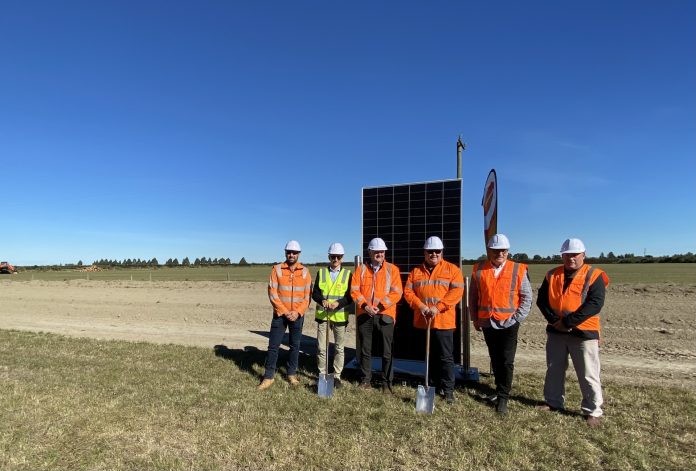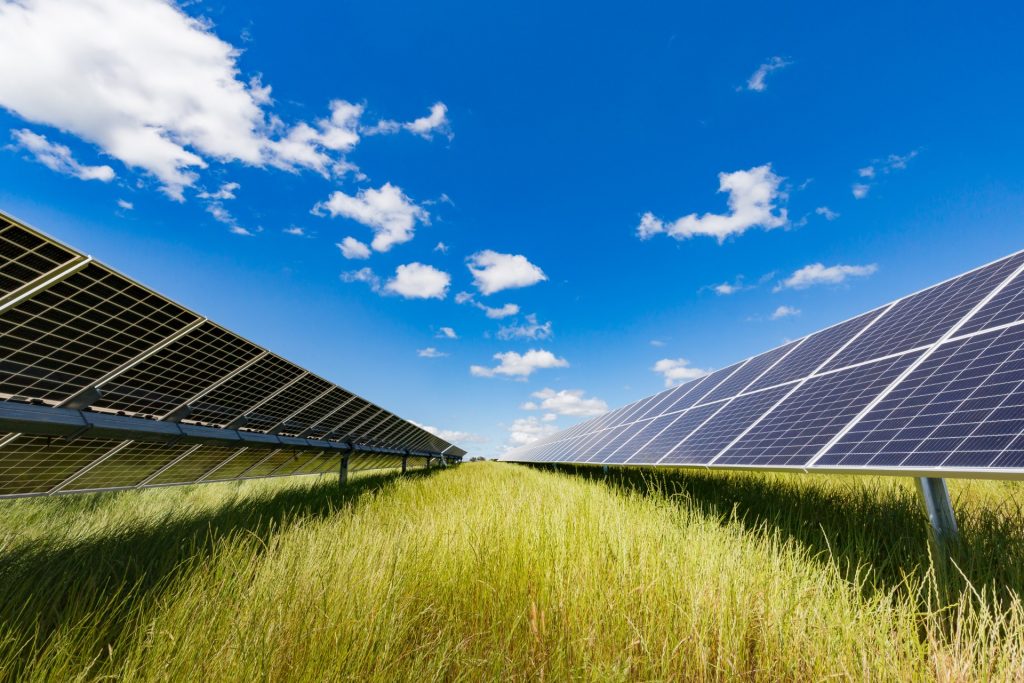
Genesis and joint venture partner FRV Australia have started building New Zealand’s largest solar farm at Lauriston.
A sod-turning ceremony on Tuesday saw Genesis chief executive Malcolm Johns and FRV Australia chief executive Carlo Frigerio launch construction of the project, which will power the equivalent of about 13,000 houses.
Electricity generated will be used by homes, farms and businesses in Mid Canterbury, while any excess will feed into the national grid to be used by the rest of the country.
The 63MW solar farm is on a 93ha site, leased by the joint venture partners from landowner Bernard Daley, who will continue to graze sheep underneath the panels.
The solar farm is expected to be operational by the end of the year.
The sod-turning ceremony was attended by Ashburton mayor Neil Brown and EA Networks chief executive Onno Mulder, and joint venture construction partner BEON general manager Kieren Lewis.
‘‘This project demonstrates our pioneering spirit in leading sustainable energy transitions in new markets,’’ Frigerio said.
The joint venture partners are also assessing three North Island sites with a combined capacity of up to 400 MW as Genesis focuses on moving to about 95 per cent renewable generation by 2035.
Johns said solar energy from sites such as the Lauriston one would also enable Genesis to reduce generation emissions in the move to become net zero by 2040.
“The pleasing aspect of this project is it shows the value of our joint venture and that the model we have put in place for Lauriston works. It has allowed us to sign quality delivery partners, including our lead contractor, equipment suppliers and lenders,” Johns said.
The expected construction costs is about $104 million. More than 50 jobs will be created during the construction phase, while the solar farm is expected to employ up to three full-time staff when operational.
Johns said the start of construction was an important milestone for the joint venture and for the country.
“For New Zealand to reach net zero 2050, the country’s energy must become 60 per cent electric, 95 per cent renewable and available 100 per cent of the time. Solar has a clear role to play in this transition, and Lauriston is the first stage of the joint venture commitment to build 500 MW of solar capacity throughout New Zealand,” Johns said.
Frigerio said Lauriston was just the beginning of the mission to bring together more solar projects to the country, powering a sustainable future for all.
Daley said the approach to lease his land from the joint venture was ‘‘out of the blue’’.
“It was a positive for the farm as it’s non-irrigated and I could continue grazing stock under the panels. And it’s a positive for the area to have clean green energy generated and put into the local system. It’s a win win,” Daley said.
An added bonus was that Genesis and FRV would be planting about 3500 native plants around the site.

‘‘My parents were great advocates of planting shrubs, trees and shelter belts in the early years so it’s great the project can build on that.”
He was also pleased new jobs were being created, and the construction and operation would also benefit Mid Canterbury suppliers and services.



